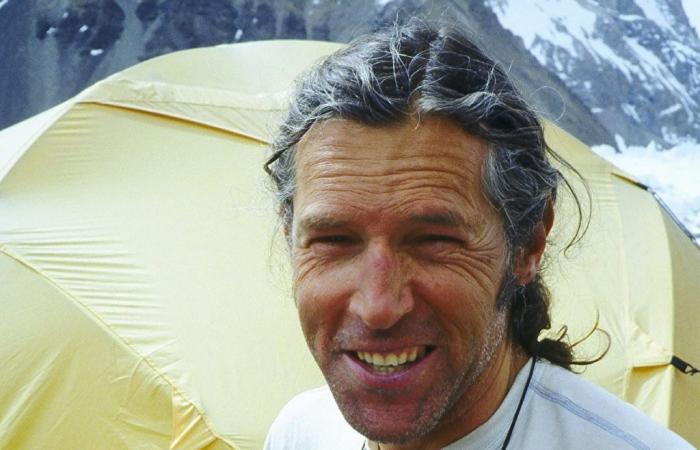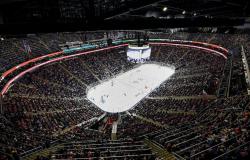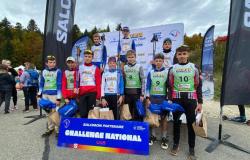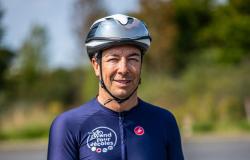Spanish climber Jordi Corominas has been named the 2024 winner of the Career Golden Boots. He will receive the 16th Walter Bonatti – Piolets d’Or Lifetime Achievement Award at the international festival of San Martino di Castrozza (Dolomites, Italy) in December.
Jordi Corominas has been chosen as the recipient of the 2024 Piolet d’Or Lifetime Achievement Walter Bonatti Award. The Spanish mountaineer will receive the 16th Career Piolet d’Or after Walter Bonatti, Reinhold Messner, Doug Scott, Robert Paragot, Kurt Diemberger, John Roskelley, Chris Bonington, Wojciech Kurtyka, Jeff Lowe, Andrej Štremfelj, Krzysztof Wielicki, Catherine Destivelle, Yasushi Yamanoi, Silvo Karo and George Lowe. The award ceremony will be celebrated in San Martino di Castrozza (Dolomites, Italy) from December 8 to 11, 2024. Below you will find the Piolets d’Or press release.
Golden Piolets 2024 – 16th Walter Bonatti – Career Golden Piolets Award
Jordi is a long-time IFMGA mountain guide living in Benasque, on the southern slopes of the Pyrenees. Born in Barcelona, he spent his youth climbing in the Pyrenees and the mountains of La Rioja, where he began creating new routes. It was at this time that corridor climbing and the first winter ascents on the Pyrenees peaks developed. At the beginning of the 1990s, he decided to fully invest in the mountains and became a professional guide.
Jordi has made significant contributions to multiple areas of mountaineering, from his personal high-level ascents in pure style, his long career as a professional guide (over 30 years guiding in the Alps), his role as director of the Spanish National Mountaineering Association. Team from 2002 – 2010, training new guides. And it continues. Recently, he guided his friend, the famous Spanish mountaineer and expedition leader, 90-year-old Jordi Pons (the first Spanish mountaineer to climb the Walker Spur and the Eiger North Face), to the Mönch, peaking at 4,107 m, in the Bernese Oberland.
Perhaps his most important role is using his vision of mountaineering – light, free, modern and progressive climbing – to influence the transition between two generations of Spanish climbers.
As mountaineer and journalist Oscar Gogorza writes:
“Long before I met Jordi, he was already a legend in the small world of Spanish mountaineering. However, he preferred to listen rather than speak. I’ve known him for 25 years and I’ve never heard him say, “I climbed this mountain, or that.” Never. I’ve only just discovered the depth of his resume, which he kept secret for so long.
Jordi is the link between the Spanish mountaineers of the 20th century and those of the 21st century. Through his hands have passed students whom he trained to become mountain guides; It was into these same hands that the talents of the national mountaineering teams passed, to whom he taught the highest ethical standards, not by lectures, but by example.
Oddly enough, Jordi, so reluctant to speak, always loved words. He is an avid reader, studied Castilian and is the founder of a small publishing house of mountaineering literature. He always believed that the ultimate value of mountaineering was tied to its stories. The man and his experiences tell much more than the climbs. He also wrote a dictionary of mountaineering from A to Z which, in my humble opinion, is worth much more than his famous second ascent of the Magic Line of K2.
Shortly after this climb, I made an appointment to interview him. I left at dawn and drove five hours to Benasque, where I found him sitting in the sun with a coffee and a sandal on one foot showing frozen toes. Three seconds after I sat down, he looked at me with deep intent and told me he would only tell me the facts of his ascension, not his feelings. They belonged to him and he didn’t want to share them. I immediately understood that I had made the trip for nothing.
Ten years later, we both missed the Montenvers train after an alpine outing. A long, boring downhill hike awaited us and I told him it was time to let me know his feelings about K2. He spoke: the wait was worth it.
During the 2024 Piolets d’Or, I hope someone else asks him how he felt every time he took on a mountain challenge, not just what he climbed. I also hope that during the ceremony he will be as happy as the day he met his idol Walter Bonatti, the day the Italian received the first Lifetime Achievement Award.”
Jordi’s most notable climbs and (many) attempts are listed below. As he notes: “I’m not the best Spanish mountaineer, but maybe I’m the most persistent? “.
Jordi’s most notable climbs:
The Pyrenees
His first bivouac – at the age of two weeks.
Opening of some of the first mixed sporting routes in the Pyrenees.
Repeats almost all the classic routes of the massif, and in the 80s and 90s carried out winter ascents of legendary routes such as the west-northwest face of the Grand Pic du Midi d’Ossau, northern spur of the Pique Longue du Vignemale, the Centrale Dièdre on Peña Telera, and the north face of the Tour de Marboré, as well as two solo attempts on the Pilier de L’Embarradère on the Grand Pic du Midi d’Ossau.
Climbing new routes in summer and winter in Ordesa, Bujaruelo and Benasque
regions.
Patagonia
2008. First ascent of the north-east face of Cerro San Lorenzo (3,706 m) (ED- pre-summit after joining the last section of the South African route on the east ridge).
2012. First ascents of the Eastern Buttress of Cerro Moyano 2,640 m (TD+) and the Eastern Buttress of Cerro Norte 2,580 m (TD).
Peru
2003. First solo ascent of the Japanese route on the south face of Chopicalqui (TD) 6,395 m.
2005. New variants (bottom and top) of the 1973 French Route on the northeast face of Huascarán Norte (6,654 m) (TD-, 12 hours round trip).
Other speed solos in the same season: the first solo ascent (and very rare repeat) of the Ecuadorian Route (TD+) on the south face of the 6,259 m Santa Cruz in six hours then a descent of the original German Route. (TD-) on the same face in three hours; solo ascent of the northwest face (TD-) over 6,127m
Sarapo in three hours, then a descent of the northeast face (TD-) in two hours.
2007. First ascent of the west face of the 6,265 m Siula Chico (ED+) for his third attempt in five years. A new route on the north face of Huascarán Sur 6,768 m (TD+). The first ascent of the south face of Nevado Copa (6,188 m) (ED, to the summit ridge).
2011. First ascent of a direct arrival on the French route over 6,001 m Chacraraju Este (ED). A solo ascent of the 6,025 m Artesonraju.
Himalaya-Karakoram
Climb the highest peaks, all without supplemental oxygen
1991. Dhaulagiri (8 167 m), voie normale.
2004. Second ascent of the Magic Line (south-southwest ridge) over 8,611 m K2, climbing alone from around 8,300 m then descending the Abruzzo spur. At the time, the Magic Line was considered the most difficult technical climb on the mountain and there were no further climbs.
2006. Single push ascent of Gasherbrum II of 8,035 m via the normal route.
1988. Reached 7,400 m on the original Austrian route to Lhotse Shar.
2000. Attempt on the northeast ridge of Everest.
2006. Climbing the west face and south ridge of Gasherbrum IV to approximately 7,200 m in alpine style.
2010. Attempt the Austrian Route on the Lhotse Shar and the south face of Lhotse, both in alpine style.
2013. Attempt the south face of Xixabangma in winter, alpine style, coming from Nepal.
2019. Attempts at alpine-style ascents of the original route on the south face of Nuptse and, again, the Austrian route on Lhotse Shar.
Other climbs – all alpine style
1990. Third ascent overall and first in alpine style of the 6,904 m west ridge Thalay Sagar (V+ 60°).
1994. Second ascent of the southeast ridge (Bonington-Fotheringham route) 6,501m Shivling West (ED-). First ascent of Kundalini, east face of 6,450m Meru Nord (6b, A2+ 85°).
2002. Attempting new routes on Meru South and Meru North.
2009. First ascent of the southern pillar to the southern pre-summit (6,600 m) of Tengi Ragi Tau (ED).
Second ascent (solo) of the east-southeast face/corridor (Steck route, M5 50-60°) over 6,495 m Tawoche. Solo ascent of Ama Dablam 6,812 m via the south face.
2011. First ascent of the west face and southwest ridge of Cho Polu (TD) of 6,700 m.
2014. Second ascent of the west face (Infleti, TD) of Chugimago North 5,945m, and first ascent of the Direct South face of Chekigo 6,257m (AI5/5+ M6).
Canada
Three visits to the Rockies to climb ice and mixed routes to WI6+ and M7.
Infos : www.pioletsdor.net






